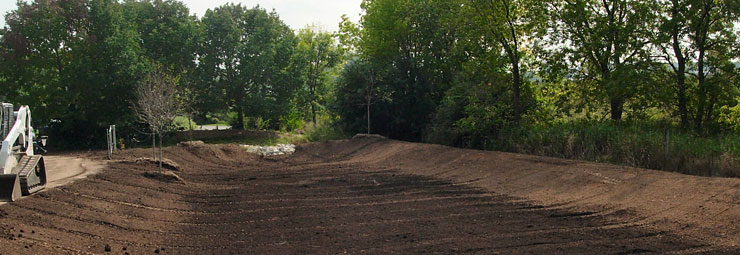
Stormwater Best Management Practices
Client: Sheboygan Water Utility
Location: Sheboygan, Wisconsin
The Sheboygan Water Utility retained Donohue to design water storage reservoirs and a booster pumping station. Two reservoirs, each with 3 million gallons of storage capacity, are included in the project. Sustainable Stormwater Best Management Practices (BMPs) were incorporated into this project.
The project goal was to minimize the impact of development on the environment and downstream watershed and use natural plantings and processes where feasible. The principles of BMPs that the Donohue team followed during design included:
Treat water as a resource, not a waste product.
The site does not have stormwater retention ponds or maintenance-intensive grass; rather, natural vegetation―native prairie mix on shallow sections and wet detention mix on deeper sections―are used to collect and infiltrate stormwater runoff and protect a nearby trout stream.
Mimic or replicate the site’s natural hydrology.
Natural drainage areas are located on the western side of the site. Flows are directed to the infiltration basins located on this side.
Address issues of water quality, quantity, and amenity.
Prior to this project, the 100-year, 24-hour flow for on- and off-site flows on the existing site was 6.13 cubic feet/second (cfs). Following the improvements, the level decreased to 2.01 cfs.
Accommodate the standards and expectations of the local community.
This project had to comply with the newly-adopted City of Sheboygan stormwater ordinance. This ordinance requires 40% Total Suspended Solids (TSS) reduction for “infill” areas, 80% TSS reduction for new development, peak flow reduction, and infiltration if suitable soils are present.
Infiltration is more desirable than detaining or retaining stormwater.
All areas not used for structures, paving, or ditches become part of infiltration basins comprised of natural vegetation.
